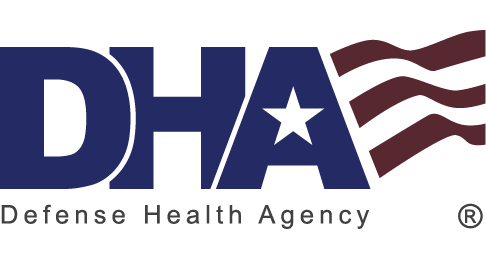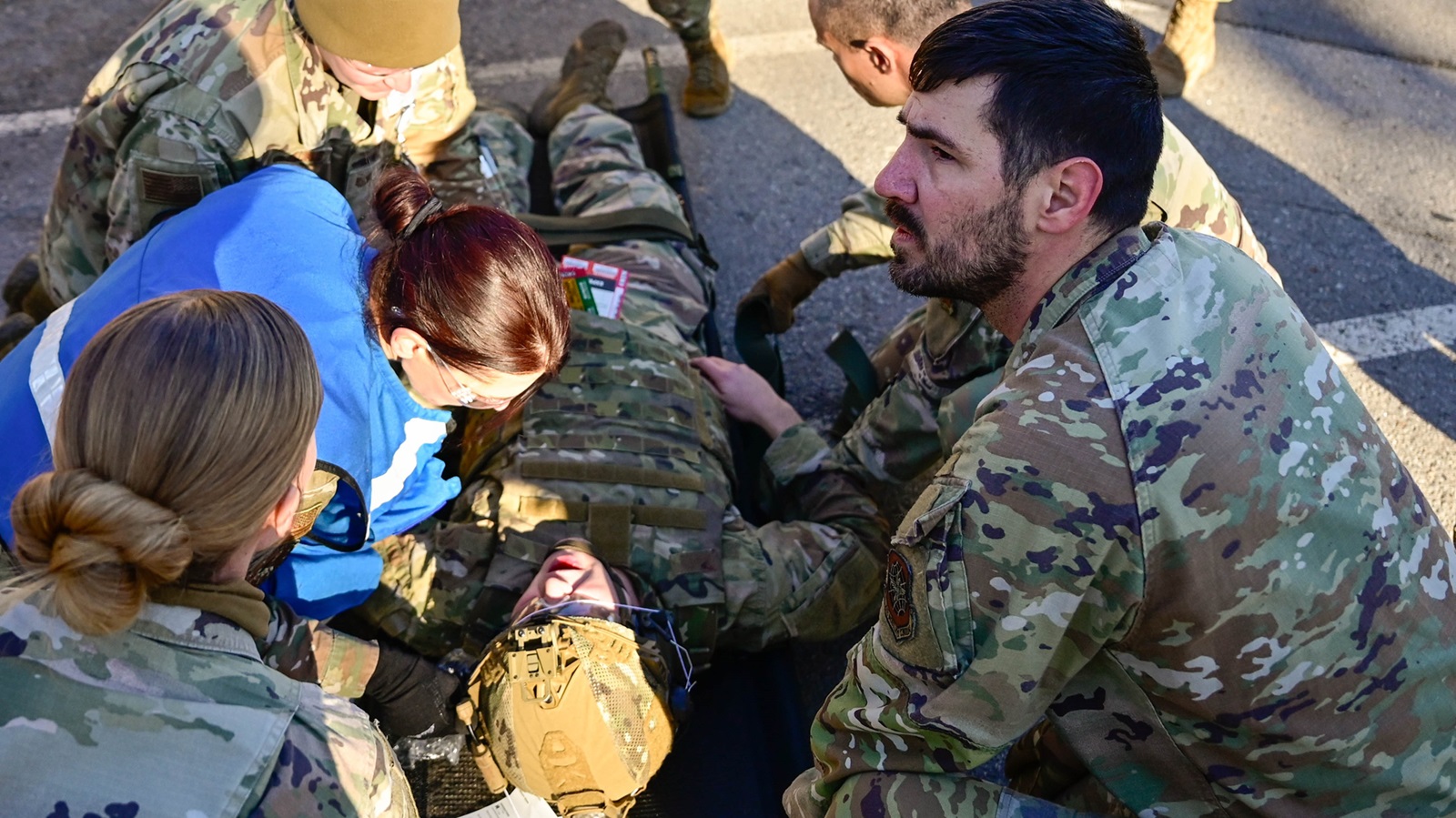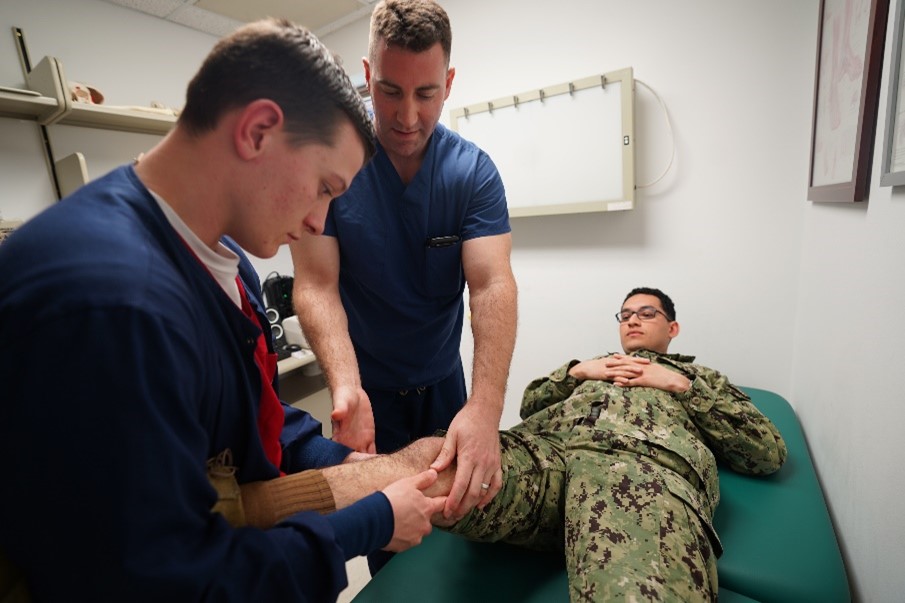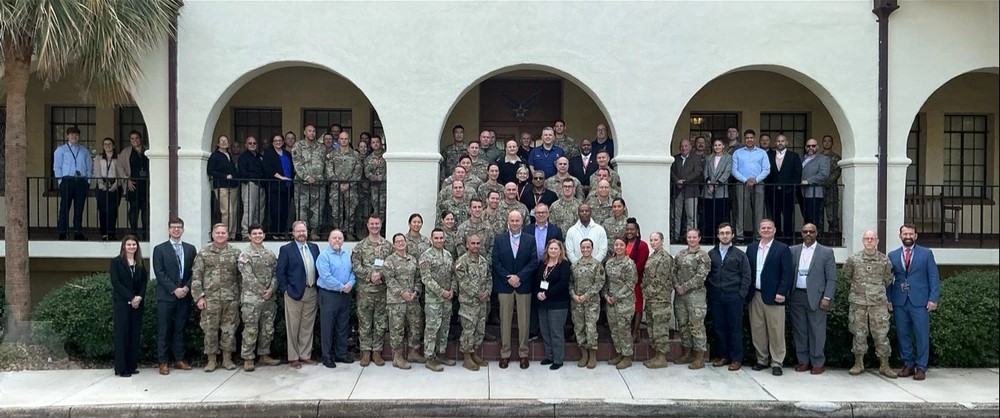Jan. 27, 2025 | By Airman Aidan Stein, 19th Airlift Wing
LITTLE ROCK AIR FORCE BASE, Ark. — The 19th Medical Group hosted an exercise simulating a deployment that simulated what a medical care station would operate like under high stress conditions at Little Rock Air Force Base, Arkansas, Jan. 23, 2025.
The exercise familiarized the 19th MDG personnel with operating in a fast pace, unpredictable scenario similar to an operation out on the field, ranging from providing quick urgent care to wound packing and irrigation, as well as medical evacuation procedures.
“One of the biggest goals was to introduce them to an environment that they have never been introduced before, a lot of people have not been deployed, and they haven’t,” said Medical Logistics flight commander Maj. Amy Hartman. “We wanted to set it up to show them what resources you have when you’re deployed, what the flow looks like, and how care can be different.”
Hartman has been deployed to combat zones several times and was a main coordinator for the exercise for the 19th MDG. She advised on positioning for personnel during the exercise.
“In the ER we had a station for wound packing and wound irrigation, so if you had a patient that needed actual would packing or irrigation, they would bring the patient over to that area,” Hartman said. “They would do the IVs on the mannequin arm or the suturing on pig’s feet.”
Part of the training included preparing patients in critical condition to be transported to get the medical care they require by using a nine line.
“Nine line is a medevac request, so that’s actually a request to where you’re at, basically a deployed environment,” Hartman said. “They also set up to get an actual medical type of aircraft, a C-17, C-130, whatever ‘bird of opportunity’ they had available to put patients on to get them evacuated out.”
Senior Airman Cooper Kaufman, 19th Medical Group medical technician, utilized the exercise to help prepare himself and other airmen for a deployed environment.
“Situations like this keep us on our toes and can let us know what we can expect in a deployed environment,” Kaufman said. “So, when your nerves are a little high and you’re still able to perform and do what you’re trained to do -- just lock in. It helps me know down range we are able to help out our people.”
Part of the exercise required conducting operations without electricity and having to revisit skills that have not been practiced.
“The power was out, we didn’t have communication, having to work under flashlights, it’s hard to see, makes everything a lot harder,” Kaufman said. “Communication is always difficult in any situation, and I feel like under an exercise its one of the first things to fall apart, not having actual comms and having to send runners made for some miscommunication.”
This exercise was the first of this year and was able to significantly assist medical personnel for a real-world environment. The 19th MDG plans to continue to implement training like this in the future to equip Airmen with the tools and experience they need to operate in any environment.
“We’re really focused on trying to prepare for something that we’ve never done before, because everybody says that we’re going into the great power competition and that our deployments are going to be a lot different than they used to be,” Hartman said. “Our job is to prepare the next generation the best that we can to handle what they’re going to deal with.”





